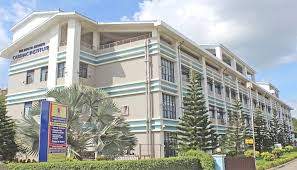Day :
Chair
Heart Disease and Failure
Session Introduction
Camille-Marie Go-Cacanindin
Philippine Heart Center, Phillipines
Title: Anomalous Left Coronary Artery from the Right Pulmonary Artery
Biography:
Camille-Marie Go-Cacanindin has obtained her Medical Degree at the age of 25 years from University of Santo Tomas Faculty of Medicine and Surgery and Pediatric Residency Training from Philippine Children’s Medical Center. She is currently a Pediatric Cardiology Fellow in training at Philippine Heart Center, a tertiary cardiovascular referral center.
Abstract:
Anomalous origin of the left coronary artery arising from the pulmonary artery (ALCAPA) occur in 1 in 300 000 live births. The most common origin of the abnormal LCA is from the pulmonary truncal sinuses. The rarest form of ALCAPA presents with anomalous left coronary artery arising from the right pulmonary artery. This is a case of 1 month old female presenting with Dyspnea , 2D echocardiography revealed ALCAPA. Intraoperativley, the Left Coronary Artery was found to be originating from the Right Pulmonary Artery. The patient underwent coronary implantation and LeCompte procedure.
In the most common form of ALCAPA, the abnormal coronary artery arises from the adjacent pulmonary valvar sinus, rather than the pulmonary trunk. In this case, the Anomalous Left Coronary Artery originated the Right Pulmonary Artery. Such case has an incident of 1 in 2,000,000 live births. This is the first reported case in a tertiary cardiovascular referral center. In fetal life, this has no detrimental effect since pressures and saturations are similar in the aorta and pulmonary artery. After birth, however, the pulmonary artery contains desaturated blood at pressures that rapidly fall below systemic pressures. The left ventricle is perfused with desaturated blood at low pressures leading to infarction with ventricular dysfunction. Coronary translocation and Lecompte maneuver was done which provided relief for the patient’s condition.
Aila V. Velasco
Lorma Medical Center, Philippines
Title: Cor Triatriatum Sinister and Patent Ductus Arteriosus in a 23 year-old Filipino
Biography:
Aila Velasco is a graduate of Doctor of Medicine at Saint Louis University last June 2017, passing the Physician Licensure Examination in the Philippines last September 2018. She is currently under the training program for Internal Medicine. Her experience for research was based on her pre-medicine course in the University of the Philippines and during her post graduate years; where her skills for writing were honed by being a part of the University publication. Writing a medical paper in is a continuous process, a rapidly expanding experience, a challenge but also an opportunity for scientific knowledge.
Abstract:
Cor triatriatum is a rare cardiac condition involving the left atrium, representing only 0.1-0.4% of all congenital heart diseases. It presents as one of the atrium being divided into two chambers by a fibromuscular membrane and classically appear on the left atrium.
We report the case of a 23-year old Filipino female with orofacial cleft, presenting with symptoms of decompensated heart failure. Clinical examination revealed the presence of diastolic murmur, 5/6, with accentuated pulmonary component of the second heart sound. Cardiomegaly was seen on chest x-ray and right ventricular hypertrophy on electrocardiogram. Transthoracic echocardiogram (TTE) shows Cor triatrium sinistrum; dilated left atrium divided by a membrane into a proximal and distal chamber; dilated right atrium; dilated right ventricle with right ventricular hypertrophy; dilated main pulmonary artery; and severe pulmonic regurgitation with severe pulmonary hypertension.
TTE should provide accurate and sufficient characterization of cardiac anatomy for optimal diagnosis but because of its rarity, can be missed. A transesophageal echocardiography (TEE) provides excellent resolution and offers invaluable assistance to surgical intervention. TEE was done upon follow up to rule out associated congenital abnormalities which only showed patent ductus arteriosus.
Surgery provides a satisfactory early and long term survival. Therefore, accurate evaluation of cor triatriatum is the key. Our report highlights early diagnosis and the utility of transesophageal echocardiography in the diagnosis of such congenital cardiac abnormalities and associated lesions.
Biography:
Abstract:
Background: Management of heart failure is complex and multifaceted but adherence to medications remains the cornerstone of preventing avoidable readmissions, premature deaths, and unnecessary healthcare expenses. Despite of evidence-based efficacy on anti-failure drugs, poor adherence is pervasive and remains a significant barrier to improving clinical outcomes in heart failure population.
Methods: We enrolled 459 patients with established diagnosis of heart failure. Sociodemographic, clinical, laboratory, and echocardiographic data were gathered using a structured questionnaire during the hospital admission of enrollment. Medication adherence was assessed using the 8-item Morisky Medication Adherence Scale (MMAS-8). The primary outcome measures were rehospitalization and mortality at 180-days. Linear logistic regression analyses were used to assess for factors associated with adherence and predictors of rehospitalization. Based on their adherence status, participants were compared with respect to survival using Cox proportional-hazards regression model. All tests were 2-sided and p<0.05 was used to denote statistical significance.
Results: The mean age was 46.4 years and participants aged ≤50 years constituted 55.4% of the cohort. There was a female predominance (56.5%), 67.5% resided in urban areas and 74.2% had primary education. About 22% of all participants had health insurance. Of the 419 participants eligible for assessment of medication adherence, 313 (74.7%) had poor adherence and 106 (25.3%) had good adherence. Possession of a health insurance was found to be the strongest associated factor for adherence (OR 8.7, 95% CI 4.7-16.0, P <0.001). During follow-up, rehospitalization rates were 32.8%, 48.1% and 53.0% at 30, 90 and 180 days respectively. Participants with poor adherence displayed a 70% increased risk for rehospitalization compared to their counterparts with good adherence (RR 1.7, 95% CI 1.2-2.9, p = 0.04). Overall, 177 (42.2%) patients survived the 180-days of follow-up. Poor adherence was found to be the strongest predictor of early mortality (HR 2.5, 95% CI 1.3-4.6, p<0.01).
Conclusion: Poor medication adherence in patients with heart failure is associated with increased readmissions and mortality. In view of this, deliberate efforts to assess and improve adherence should be incorporated and become an integral part of daily patient management. Furthermore, strategies to increase health insurance acquisition are fundamental to improve adherence especially among persons living in resource-poor settings.
Eyubova Ulviyya
Azerbaijan Medical University, Baku, Azerbaijan
Title: Recent advances in the pathogenetic treatment of heart failure
Biography:
Eyubova Ulviyya is the member of Azerbaijan Society of Cardiology, PhD Student of Azerbaijan Medical University.
Abstract:
Actuality: The 2017 data shows that 26 million people worldwide suffer from heart failure. This number increases every year for a number of reasons in all countries of the world. Numerous studies in recent years have revealed important advances in the treatment of the disease. One of them is the detailed study of the role of BNP in your disease category and the use of therapeutic approaches according to this role.
The aim was to study the effects of the sacubitril / valsartan combination on the patients with chronic heart failure of II-IV functional classification according to the NHYA classification.
Materials and methods: The results of 30 male and female patients with functional heart failure II classification according to NHYA classification were researched. Patients were over 25 years of age. Each patient was given a combination of sacubitril / valsartan 200mg daily (100mg in the morning and 100mg in the evening). After 6 months, the functional class was re-evaluated.
Results of our study: At the time of re-examination after 6 months, an improvement was observed in the indications of functional classification of 20 patients.
Conclusion: As a result of the study, we found that the addition of sacubitril / valsartan combination to the treatment of chronic heart failure has an important effect in patients.
Biography:
Zakarya Radman Hasan Saad specialist in Cardiology, Master Degree (MSc) of Cardiology Cairo University, Cairo, Egypt, Nov 2018. Bachelor Degree of Medicine (MBBS):very good /Damascus University, Damascus, Syria, 2011. One year of internship at Damascus University Hospital Syria, attending the entire departments as scheduled by the Syria University Hospitals having skills and broad knowledge on assessment and diagnosis of the patients with further development of the appropriate treatment plan and follow up the patients. Jan-2014-July2019: Worked as a resident in the department of Cardiovascular Medicine , Kaser Al-Aini Hospital-Cairo University in the following: Also skilled in diagnostic procedures with patients
Abstract:
The role of the three dimensional echocardiography (3-DE) in assessment of global and regional LV function need to be studied.This study aimed to compare between 2DE and 3DE in detection of regional wall motion abnormality (RWMA)and evaluation of LV regional and global function.
This study was conducted on seventy subjects divided into two groups: Group 1 (patients’ group) included 50 patients with acute coronary syndrome (mean age 55 ± 8 years) and Group 2 (controls’ group) included 30 healthy subjects (mean age 32.6 ± 8.5 years). All subjects underwent evaluation by 2 and 3-DE to detect the presence of wall motion abnormality.
Assessment of regional EF by 3DE agreed with 2D assessment, and agreement was better in certain myocardial segments (anterior wall, basal segment of inferior wall, basal segment of lateral wall and apex) than other segments.
The 3-D echocardiography provides objective and assessment of regional wall motion abnormalities in patients with ACS. However, it does not show superiority over the routine assessment of RWMA by 2D echocardiography.
Keywords: 3-D Echocardiography, ACS, wall-motion abnormality.
Biography:
Abstract:
Introduction:Heart failure (HF), previously called congestive heart failure, is a serious condition most commonly caused by weak pumping of the heart muscle. Arrhythmia is a common finding in heart failure (HF) patients. It has a greater impact on prognosis in those patients, especially atrial fibrillation arrhythmia type.
Objective: The study aimed to evaluate the effect of arrhythmia on the mortality & morbidity among heart failure patients.
Methods: Were conducted to analyses The effect of atrial / Ventricular Fibrillation on patients with Heart Failure: A prospective observational study at a tertiary care center, study data was collected from period of November to January 2018.This study divided to two groups, 1st group patients diagnosed with heart failure & 2nd group controlled group (HF + arrhythmia) .
Results: A total 200 participants, most of the respondents were males 153 (76.5), more participants were have 2 risk factors & highest one is HTN (Hypertensive)149(74.5%), interventionist procedure used among our patients were PCI for both patients have one or more interventions 99(49.3%) ,most of patients with ICD(Implantable Cardioverter Defibrillator) 90(44.8%), most type of arrhythmia atrial fibrillation 71 (35.5), a majority of NHYIA class(New York Heart Association) is class I 137 (68.16), the most symptom palpitation 176(87.56%) , ejection fraction in were patients 30% with total 52(25.87%) & highest medication used is beta-blocker185(92.04%).
Conclusions: Arrhythmias one of most factors cause of heart failure disease. AF(atrial fibrillation) is the most common arrhythmia in HF, AF prevalence and its associated complications have been well studied in established HF. Clinical management of HF needs to take into account the high risk of arrhythmias among these patients.
Biography:
Dr. Sudha Bansode is a Associate Professor in Zoology at Shankarrao Mohite College, Akluj, Maharashtra State, India. Recently she has completed her Post Doctoral Studies at University of California, Riverside, USA. She is a active researcher & passionate teacher in India. Still she has been published above 35 research papers in International Journals & she is interested on Bone Research. Also she has honour of Distinguished Editorial Board Member of several International Journals. She is a own author of “Textbook Histological Techniques” & “Outlines of Physiology”. And now she is working on another own reference book “Rhythms in Freshwater Crustaceans”. She is a University recognized research guide for Ph.D. students in India.
Abstract:
Abstract
There are many factors that can increase your risk of getting heart disease. Some of these factors are out of your control, but many of them can be avoided by choosing to live a healthy lifestyle. Some of the risk factors you cannot control are: Gender, Age, Family History, Obesity, High Cholesterol, Smoking, High Blood Pressure, Diabetes, Other Factors.
Heart disease is the leading cause of death. The causes and prevention of heart disease have been studied for years, and new information is emerging. For the last several decades, saturated fat and cholesterol have been thought to be major contributors to coronary artery disease, and therefore people are typically advised to strictly limit these in their diet. However, recent studies are indicating that it may not be wise to strictly limit the intake of dietary saturated fatty acids or replace them with polyunsaturated fatty acids when taking other health conditions into consideration. Depending on a person’s genetics, diet may or may not be an important factor in preventing heart disease. Exercise is also beneficial for everyone in preventing heart disease. When considering human development, including the negative effects of heart disease, humans still have a lot to learn about the human body and the interaction of diet, the environment, and genetics.
Keywords:- Heart Disease/Blood Pressure/Cardiovascular Disease/Heart Attack.
Mila Jakovljević
Polyclinic for Cardiovascular Diseases and Prevention, Croatia
Title: Integrative metabolic therapeutic approach for symptomatic patients with left ventricular dilatation and reduced ejection fraction
Biography:
Mila Jakovljević completed her specialisation in internal medicine at the Department for Heart and Blood Vessel Diseases, Zagreb University Hospital Centre. She subsequently completed a programme in cardiology and clinical pharmacology and gained a doctorate degree in medical sciences at the University of Zagreb covering topics from the field of cardiology. Now she is the director of Saint Nicholas Polyclinic for Cardiovascular Diseases and Prevention, Croatia
Abstract:
Introduction & Aim: Myocardial energetics has a central role in the pathophysiology of heart failure. Our hypothesis was that cardiac metabolic therapeutic approach must be integrative, improving both the substrate utilization and the complete substrate oxidation, i.e. supporting normal mechanism of energy production without increased generation of reactive oxygen species. Since the energy metabolism is closely linked to cardiac function, we assessed the effect of the integrative metabolic approach on the functional ability and quality of life in patients with heart failure and reduced ejection fraction /HFrEF/.
Methods and results: We investigated 33 patients with left ventricular dilatation /LVIDd>60 mm/ and reduced ejection fraction /EF<40%/ in 76 complementary supportive therapy /CST/ periods. Prior to each CST period,therapy was optimized /OMT/ for one month. CST consisted of a 10-day session. In addition to OMT,the patients were treated with carnitine, L-arginine, magnesium, vitamin B, coenzyme Q-10, vitamin E, vitamin C and selenium while lying for 30 minutes inside a pulsed electromagnetic field with intensity of up to 30 microteslas and inhaling negatively ionized oxygen. Before and after each CST period, patients were asked to evaluate the quality of life using the Minnesota Living with Heart Failure Questionnaire /MLHFQ/ and the visual analogue scale /VAS/, EF, LVIDd and NYHA classes were determined. Statistical analysis was based on the t-test, Spearman's rank correlation coefficient and Wilcoxon's signed-ranks test. The longest observation period was 122 months.
After administering the metabolic supportive therapy, a statistically significant improvement /p<0,05/ was noticed in particular items of the MLHFQ, in emotional and physical dimensions. The values of VAS and EF increased whereas the values of NYHA and LVIDd decreased significantly /p<0,001/.
Conclusion: Integrative metabolic therapeutic approach significantly improved the functional capacity and quality of life in patients with HFrEF.
Pedro Pallangyo
Universiti Malaysia Sabah, Malaysia
Title: Hypertension in Urban Tanzania: A ticking time bomb

Biography:
Pedro Pallangyo graduated with MPH and Master of Medicine in Internal Medicine from Dartmouth Medical School and Muhimbili University respectively. He is the director of Research and Training at Jakaya Kikwete Cardiac Institute, Dar es Salaam, Tanzania. He has published more than 15 papers in reputable peer reviewed journals.
Abstract:
Background: Globally, elevated blood pressure is the leading single cause of morbidity and mortality, and a growing epidemic of public health importance in sub Saharan Africa (SSA). Despite of the rapidly increasing prevalence of hypertension in SSA; the detection, treatment and control rates are staggeringly low in the region. We aimed to determine the prevalence, treatment and control rates of hypertension among residents of Tanzania’s largest city and economic capital, Dar es Salaam.
Methods: 2773 adults were recruited in a cross-sectional, community-based survey in June 2019. Physical activity was assessed using the physical activity vital sign scale (PAVS). Qualified nurses measured and recorded blood pressure and anthropometric measurements. Hypertension was defined according to the 8th Report of the Joint National Committee (JNC 8) or use of blood pressure lowering medications. Chi-square and student’s t-test techniques were employed in the comparison of categorical and continuous variables respectively. Multivariate logistic regression analyses were performed to assess for the factors associated with elevated blood pressure.
Results: The mean age of participants was 45.8 years and 61.8% were women. 6.8% were ever smokers, 13.1% were alcohol drinkers, 64.9% had excess body weight, and 87.3% were physically inactive. 1652 (59.6%) of individuals had elevated blood pressure or were using anti-hypertensive medications; 943 (57%) of these were unaware of their hypertensive status. Among those with hypertension awareness, 36% were on regular treatment and 17.5% had their blood pressure controlled. Age ≥40 (OR 5.7, 95% CI 4.2-7.8, p<0.001), male sex (OR 1.6, 95% CI 1.1-2.2, p<0.01) and BMI ≥25 (OR 3.9, 95% CI 3.1-5.1, p<0.001) were strongly associated with ‘newly diagnosed hypertensive’ status.
Conclusions: Our findings suggest that excess body weight is a single modifiable risk factor strongly associated with high blood pressure. In view of this; strategic, collaborative and aggressive pan-African measures to control the obesity epidemic is fundamental in the fight against hypertension.
Naveed Shaikh
MBBS, FCPS, NICVD Pakistan
Title: Assessment of Triglyceride to High-density Lipoprotein Ratio as an Indicator of Coronary Artery Disease
Biography:
Dr Naveed has completed his MBBS at the age of 25 years from Liaquat University of Medical Health Sciences,Jamshoro Hyderabad, Pakistan and postdgraduate studies from National Institute of Cardiovascular Diseases Karachi. He is the Clinical Fellow of Adult Cardiology. He is also certified BLS and ACLS Instructor from AHA in College of Physicians and Surgeons in Pakistan.
Abstract:
Introduction: Increased ratio of Triglyceride (TG)/ High-density Lipoprotein (HDL) has been known as an accompanying finding in conditions like obesity and metabolic syndrome. Therefore, the aim of this study was to assess the utility of TG/HDL ratio as a diagnostic tool for the assessment of coronary artery disease (CAD).
Methods: This study was conducted at a semi-private hospital Karachi; patients above 15 years of age and undergone angiography or PCI were included. Patients with Congenital Heart Disease and familial hyperlipidmeia were excluded. TG/HDL ratio was obtained for all patients, severity of the disease was classified as normal, mild to moderate, moderate to severe, and very severe based on coronary angiography. Analysis of variance was applied to assess significant differences in mean TG/HDL ratio among severity of disease. P-value<0.05 was considered significant.
Results: A total of 2,212 CAD patients were reviewed out of which 1613 (72.9%) were male and 599 (27.1%) were female. Average age of the patients was 55.12 years (±SD=9.93). Of these 2212 patients, 533 (24.1%) had very severe disease, 1213 (54.8%) had moderate to severe disease, 258 (11.7%) had mild to moderate disease, and 208 (9.4%) were normal. A Significant and an increasing trend was observed in TG/HDL ratio with the severity of disease (p=0.0001) Statistically significant difference was observed in the TG/HDL ratio of patients with mild to moderate, moderate to severe and very severe disease from normal patients. However, no statistically significant difference was seen in the TG/HDL ratio between the patients with moderate to severe and very severe disease.
Conclusions: A positive relationship between Triglyceride to HDL Ratio and severity of coronary artery disease was observed. Therefore, TG/HDL ratio can be used as an indicator of severity of coronary artery disease in addition to other parameters of lipid profile.
Naveed Shaikh
MBBS, FCPS, NICVD Pakistan
Title: Assessment of Triglyceride to High-density Lipoprotein Ratio as an Indicator of Coronary Artery Disease
Biography:
Dr Naveed has completed his MBBS at the age of 25 years from Liaquat University of Medical Health Sciences,Jamshoro Hyderabad, Pakistan and postdgraduate studies from National Institute of Cardiovascular Diseases Karachi. He is the Clinical Fellow of Adult Cardiology. He is also certified BLS and ACLS Instructor from AHA in College of Physicians and Surgeons in Pakistan.
Abstract:
Introduction: Increased ratio of Triglyceride (TG)/ High-density Lipoprotein (HDL) has been known as an accompanying finding in conditions like obesity and metabolic syndrome. Therefore, the aim of this study was to assess the utility of TG/HDL ratio as a diagnostic tool for the assessment of coronary artery disease (CAD).
Methods: This study was conducted at a semi-private hospital Karachi; patients above 15 years of age and undergone angiography or PCI were included. Patients with Congenital Heart Disease and familial hyperlipidmeia were excluded. TG/HDL ratio was obtained for all patients, severity of the disease was classified as normal, mild to moderate, moderate to severe, and very severe based on coronary angiography. Analysis of variance was applied to assess significant differences in mean TG/HDL ratio among severity of disease. P-value<0.05 was considered significant.
Results: A total of 2,212 CAD patients were reviewed out of which 1613 (72.9%) were male and 599 (27.1%) were female. Average age of the patients was 55.12 years (±SD=9.93). Of these 2212 patients, 533 (24.1%) had very severe disease, 1213 (54.8%) had moderate to severe disease, 258 (11.7%) had mild to moderate disease, and 208 (9.4%) were normal. A Significant and an increasing trend was observed in TG/HDL ratio with the severity of disease (p=0.0001) Statistically significant difference was observed in the TG/HDL ratio of patients with mild to moderate, moderate to severe and very severe disease from normal patients. However, no statistically significant difference was seen in the TG/HDL ratio between the patients with moderate to severe and very severe disease.
Conclusions: A positive relationship between Triglyceride to HDL Ratio and severity of coronary artery disease was observed. Therefore, TG/HDL ratio can be used as an indicator of severity of coronary artery disease in addition to other parameters of lipid profile.
Muluken Altaye Ayza
Mekelle University, Mekelle, Ethiopia
Title: Cardioprotective Effect of Croton macrostachyus Stem Bark Extract and Solvent Fractions on Cyclophosphamide-Induced Cardiotoxicity in Rats

Biography:
Muluken Altaye Ayza is a clinical pharmacist by profession and works as a lecturer and researcher at Mekelle University, Ethiopia. He holds anMSc in clinical pharmacy. He has 3 years of teaching experience in public university. Muluken is very interested in cardio-oncology researches.
Abstract:
Croton macrostachyus has been used in traditionalmedicine to manage heart failure and other heart diseases in Ethiopia.
To evaluate in vitro antioxidant and in vivo cardioprotective activities of stem bark extract and solvent fractions of Crotonmacrostachyus on cyclophosphamide induced cardiotoxicity in rats.
The antioxidant activities of crude extract and solvent fractions of Crotonmacrostachyus were evaluated by using DPPH radical scavenging assay method. Whereas, cardioprotective activity, the negative control group were treated with cyclophosphamide alone (200 mg/kg, i.p.). Enalapril 10 mg/kg was used as a reference drug. The crude extracts were administered at three dose levels (100, 200, and 400 mg/kg). Aqueous and ethyl acetate fractions were given at two dose levels (100 and 200 mg/kg). Excepting normal control group, all groups were subjected to cyclophosphamide toxicity on the first day. The cardioprotective activity were evaluated by using body weight, heart weight and serum cardiac biomarkers. Also, histopathological studies of heart tissues were carried out.
The results of antioxidant studies reveal that the crude extract and solvent fractions exhibited free radical scavenging activity in a dose dependent manner. Serum cardiac biomarkers were decreased significantly by the administration of crude extracts and solvent fractions. Histopathological results of heart also supported the cardioprotective activity of the crude extract and solvent fractions of Croton macrostachyus.
The results of the present study indicate that the crude extract and solvent fractions of Croton macrostachyus possesses antioxidant and cardioprotective activities.
Carolina Schwab
Klinikum Coburg, Coburg
Title: Atrial fibrillation recurrence after ablation: how much AF is really AF

Biography:
Abstract:
Atrial Fibrillation (AF) is a modern epidemic, affecting up to 9% of the population. Ablation is a well-established approach to treatment of AF. The success rates are incongruent, ranging from 60 to almost 90%. Some of the causes for that are:
• diverse definitions of recurrence after ablation
• difficulty to really document asymptomatic recurrences
• The established period of 30 seconds has questionable clinical significance.
• A recent review showed that AF episodes shorter than 6 minutes had no prognostic effect, i.e., showed no higher risk of embolic events compared to no recurrence.
• Thirty seconds is an arbitrarily given amount of time, not derived from research.
• How much AF is really significant AF is a hot topic and needs to be further addressed.
• In this study the groups without recurrence and with recurrence but AF Burden < 2% were compared.
Methods: Between April 2016 and December 2017 a total of 141 consecutive patients with symptomatic paroxysmal AF (50% , PVI only) or persistent AF (50%, PVI ± substrate modification) were included in the study. We considered 2 groups of patients according to the AF/AT Burden during follow-up: no recurrence (AF/AT Burden = 0%, n=75) and AF Burden <2% (n=36). We analyzed AF-Burdens of 0.1, 1, 2, 4, 7 and 10%. The cutoff of 2% encompassed the largest population but still showed no statistical significance compared to no recurrence. An implantable loop recorder (ILR, Linq, Medtronic) with remote monitoring was implanted one day after the procedure. Monitoring of the episodes online was made daily in workdays. The AF/AT Burden, duration of episodes and symptoms were registered systematically at 3, 6, 9 and 12 months. Otherwise the patient was contacted in case of symptoms or documented episode. A blanking period of 3 months was considered. Each AF/ AT Episode > 30 sec. was considered as a classical recurrence.
Results: There were 111 (111/141, 79%) patients with no recurrence or recurrence with AF Burden < 2%, after 12 months follow up. The groups were divided in AF Burden less than 2% (36/111, 32%) or no AF/AT recurrence (75/111, 68%).
• The baseline characteristics were comparable between the two groups .
• As assessed by continuous cardiac rhythm monitoring, AF ablation showed a 12-month arrhythmia free rate of 60% in persistent AF and 58% in paroxysmal AF, with a symptom free rate of 83% and 84%, respectively.
• Because of no significant symptomatic recurrence occurred in patients with AF Burden < 2%, no reablation or cardioversion was indicated in this patient population.
• Patients with Burden > 2% (n=30) had a 81% symptom rate, 31% cardioversion rate and 34% reablation rate. Patients without recurrence or recurrence <2% (n=111) had a 8% symptom rate and 0% cardioversion or reablation indication.
Conclusion: Patients with an AF Burden < 2% are comparable with patients without recurrence in its baseline characteristics, need of cardioversion after the ablation, symptoms and indication for re-ablation. Patients with no recurrence and AF Burden < 2% have better prognostic indicators when compared to recurrence with AF Burden > 2%. Since the aim of AF ablation is the improvement of symptoms and quality of life, it might be reasonable to consider new endpoints for AF ablation with AF Burden < 2% in future.
Shivam Gupta
INDIAN INSTITUTE OF TECHNOLOGY, MADRAS, INDIA
Title: DESIGN OF PERCUTANEOUS LEFT VENTRICULAR ASSIST DEVICE(PVAD) AND ITS ANALYSIS USING SYSTEMIC MOCK CIRCULATION LOOP(SMCL)

Biography:
Shivam Gupta is a research scholar in Department of Engineering Design in Indian Institute of Technology, Madras, India and has a Bachelors degree in Mechanical Engineering. He is currently working in Percutaneous Left ventricular Assist Device.
Abstract:
Percutaneous Left Ventricular Assist Device(PVAD) have quite cumbersome design methodologies as compared to conventional Left Ventricular Assist Device(LVAD). The aim of this study was to (i) design a micro-axial blood pump(PVAD), (ii) Validate the model using Computational Fluid Dynamics(CFD)(iii) test the model using Systemic Mock Circulation Loop(SMCL) and Particle Image Velocimetry(PIV). An in-house PVAD of shroud diameter 8mm, hub diameter 3mm, and length 16mm was designed, and manufactured using a PolyJet 3D printer. One of the most crucial aspect of the design is the successful elimination of the bearing from the leading edge. An optimum wrap angle of 250 degrees was found out, and the blade outlet angle was imposed as 90 degrees to eliminate the need for diffusor. The PVAD’s pump characteristics were then obtained by building an experimental setup of SMCL, developed in-house. The dynamic response of PVAD was recorded by varying Preload, After-Load, Healthy Heart and Diseased Heart conditions in SMCL. The PVAD showed an optimum flow rate of 2.5L/min at 60mm of Hg, whereas the maximum flow rate is 3L/ min at 40mm of Hg. Particle image Velocimetry showed small regions of recirculation at trailing edge and between blades. The Wall Shear Stress(WSS) was less than 400Pa for 95% of impeller regions. The PIV study showed conformity with CFD results within 5% of deviations.
Biography:
Abstract:
- Background:Percutaneous coronary intervention is now the best way of management of acute coronary syndrome (ACS). Contrast induced nephropathy is a serious complication and greatly dependent on several factors. It is still unclear whether the vascular access affects CIN risk.
- Objective:To study the impact of Radial Access (RA) compared with Femoral Access (FA) on developing contrast-induced nephropathy (CIN) in patients undergoing invasive management of acute coronary syndrome (ACS).
- Methods: Sixty patients eligible for invasive management of ACS at cardiology department (Menoufia University hospital and National Heart Institute) were randomized into two groups.Group I: included 30 patients with femoral approach and Group II: included 30 patients with radial approach. The occurrence of CIN estimated by KDIGO definition(absolute increase in serum creatinine (SCr) by ≥ 0.5 mg/dl within 48 hours; or increase in SCr to ≥ 25% of baseline) was estimated in both groups.
- Results: Only 9 patients (15 %) developed CIN, 5 patients (55.6%) of them underwent PCI through FA without statistically significant difference between the two approaches.
- Conclusion: CIN is considered a potential complication of percutaneous coronary intervention (PCI) .Our study did not show preference of using an approach over the other in reducing CIN.
Biography:
Abstract:
The objectives of the research are to determine which hospitals are not performing




